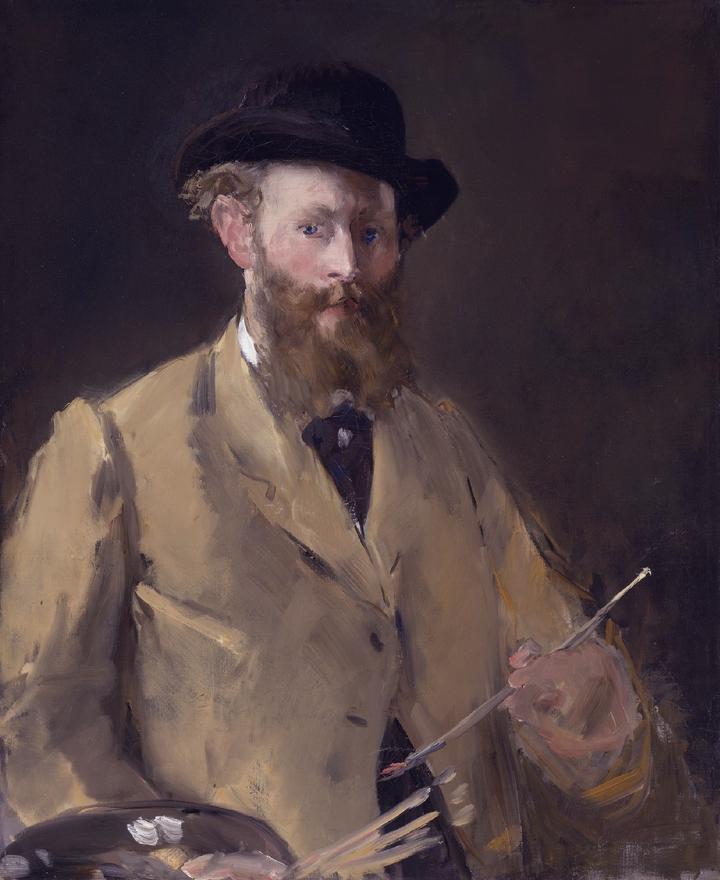 Image credit: WikiArt.org
Image credit: WikiArt.orgAbstract
Participants judged 94 portraits painted by Édouard Manet (70), Gustave Courbet (12) and Henri Fantin-Latour (12) for horizontal and vertical pupil misalignment and gaze ambiguity (Experiment 1) and focal point of gaze (Experiment 2). Eye movements were also measured as participants considered the extent to which sitters in the same portraits acknowledged viewers (spectators; Experiment 3). The results showed Manet portraits to be frequently painted with misaligned pupils that are associated with gaze ambiguity, especially when misaligned on the vertical axis. This ambiguity of gaze was associated with the average focal point of gaze as being judged further up and to the left of the center for ambiguous relative to nonambiguous portraits. These decisions in relation to portraits displaying ambiguous gaze were associated with increased eye-movements to the eye region relative to those portraits not displaying ambiguity. Finally, ratings of acknowledgment taken in Experiment 3 correlated with those of gaze ambiguity taken in Experiment 1. The results are interpreted in terms of the role of eye gaze in influencing spectatorship of portraits and, specifically, Fried’s theory of the “double relation” (Fried, 1980, 1996) between painting and spectator in the paintings of Manet. (PsycInfo Database Record (c) 2020 APA, all rights reserved)